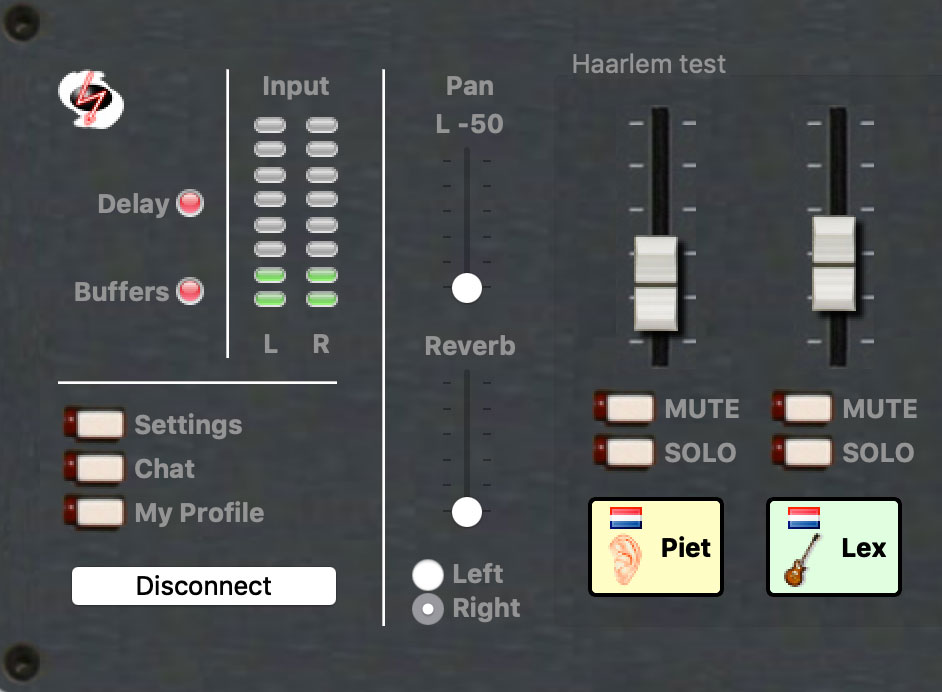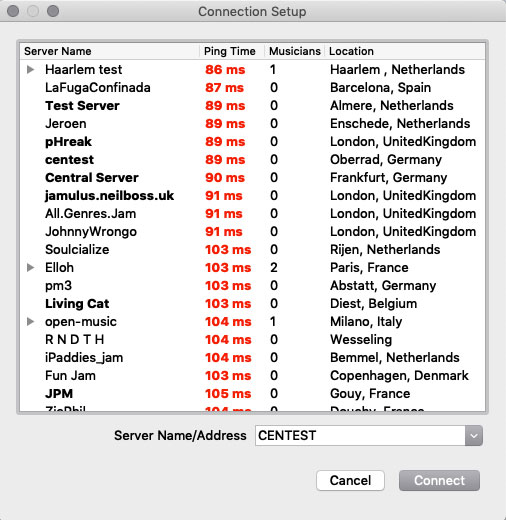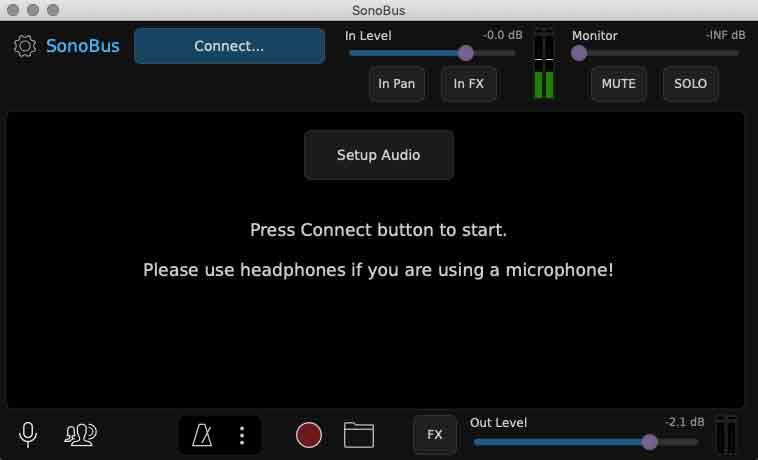Teach Online
The Microsoft Teams application
More information about the use of Microsoft Teams can be found here. If you want to download the ‘teams’ click here. You can also use Microsoft Teams in your browser.
What can you do with this application? It’s all in the name: you can work in teams of different persons (classes / projects). You can lookup fellow students, teachers and staff to exchange information through video-chat, audio-calls and sharing and working together in documents. Conference calls are supported as well.
This Application can run on your laptop, desktop or smart-phone. It will make use of the on-board camera and microphone automatically. You do not have to be a hardcore technician to get this working.
Play Online
Jamulus
In our search for good alternatives (enjoy beter audio), we ran into the program Jamulus. This is a very simple looking application available for Mac and Windows computers. We tried it out with our EWP-collegues and we were positively surprised by the good quality. This program provides a good quality audio connection (so called OPUS codec) but no video. Video can be solved by using another application, like zoom, at the same time.
To download and try out Jamulus, check this link.
If you have questions how to use this program, please contact us. Maybe we can help you out.

The way it works: you have to connected to one of the many servers available (see list below) and make sure the musician you want to play with is also connected to the same server. So you physically ‘meet’ at the same ‘place’.

What gear do you need?
How to connect the gear?
Sonobus
High Quality Network Audio Streaming
SonoBus is an easy to use application for streaming high-quality,
low-latency peer-to-peer audio between devices over the internet or a
local network. Simply choose a unique group name (with optional password), and instantly connect multiple people together to make music, live sessions, podcasts, etc.
Getting started
IMPORTANT TIPS
SonoBus does not use any echo cancellation, or automatic noise
reduction in order to maintain the highest audio quality. As a result,
if you have a live microphone signal you will need to also use
headphones to prevent echos and/or feedback.
For best results, and to achieve the lowest latencies, connect your
computer with wired ethernet to your router if you can. Although it
will work with WiFi, the added network jitter and packet loss will
require you to use a bigger safety buffer to maintain a quality audio
signal, which results in higher latencies.
SonoBus does NOT currently use any encryption for the data
communication, so while it is very unlikely that it will be
intercepted, please keep that in mind. All audio is sent directly
between users peer-to-peer, the connection server is only used so that
the users in a group can find each other.
GETTING STARTED (Mac)

First select the Input and Output devices you want to use.
You can then select the Active Input channels and Active output
channels you want to use. If you only have a mono input source (such
as a microphone) you can deselect inputs so that only one is selected,
which will reduce the sending network bandwidth.
You can choose a sample rate, 48000 is recommended, but 44100 will
also work. The different participants you connect with do NOT need to
have the same setting here, audio will be resampled if necessary
automatically.
Choose an Audio Buffer Size, this will determine a baseline for the
latency, the lower value you choose, the lower the latency, but at a
cost of increased processing and network packet overhead. Generally,
choosing 256 is safe, but for lower latency, use 128 samples. You can
go lower if your hardware supports it, but it will not be of much
benefit unless you use one the PCM send quality options (uncompressed)
which can use those smaller buffer sizes.
If you see a yellow bar across the top saying that your audio input is
muted to avoid feedback, you can press the button on the top right to
Unmute Input. If you are using a microphone input, you will NEED
headphones, make sure to connect them before you unmute the input.
CONNECTING WITH OTHERS
Press the Connect… button to get started. Choose a unique group name
that you want to use, or use the handy random group name generator
(the dice button). You can also enter a password that people
connecting to the group will also need to enter for additional
security, but it is optional. You can tell others that you want to
connect to the group name (and password, if used) or you can press the
Copy button in the top right of the Group page, then paste and share
it with the other users you want to connect with. They can use it to
paste in to this page using the paste button in the top left.
Choose a name for yourself that will be your identifier for anyone
else who joins. If someone else is already using that name on the
server it will automatically be made unique when you connect.
You can leave the default aoo.sonobus.net as the server, or enter
another server hostname if you are running your own group connection
server. Note that NO AUDIO is sent through the server, it is only used
to help the users connect to each other, all audio is sent directly
between users (peer-to-peer).
PRESS Connect to Group! If others are already in the group you should
see them show up and you’ll be able to hear other. Otherwise, you will
see a message indicating that you are waiting for others to join. You
can adjust the levels that you hear the others with the volume
sliders, or adjust the stereo panning with the Pan button (and popup
sliders) for each user.
You can Mute yourself altogether by pressing the microphone button in
the lower left corner. When your input is muted you will see a red
crossed out microphone. You can also choose who your input is muted
for independently, in case you don’t want to send audio to certain
users, but do to others. You can also mute the output from all or
individual users with the speaker button (next to the mic buttons) at
the bottom of the window or in each user’s area.
JamKazam
d.d. 25-5-2020: The application JamKazam is working properly again. The last weeks they spend time (and money) to upgrade the system and with good results. So please, try it out and create your own private music session with your teacher, student or fellow musician.
d.d. 25-3-2020: We (EWP) experienced some instability with the application Jamkazam. Probably a lot of people word-wide try to access and use it. The program Jamulus (see below) worked quiet good. It only provides a high quality audio connection, no video. Check it out.

The application JamKazam is developed to play music together on-line. You can share audio and video with multiple players and create an on-line band or ensemble. Of-course you need some additional hardware like a microphone and/or an audio interface, but with some relative ‘cheap’ tools you can already play.
You can also record sessions and playback audio tracks. This application is very versatile. Take a look on this website for more information: https://www.jamkazam.com/ The software is for free. You can download a so called ‘local’ application that will run on your computer.
Check the Youtube play-list below to find all the possibilities of JamKazam – it will take you 12 minutes.
If you have experience with DAW’s then you can try to use REAPER to Jam Online with each other. It is quite easy to setup and the idea is similar to Jamulus only this is within a DAW so you have options for multiple channels, plugins, playback etc. Check out our TIPS page to see how to set it up. Bellow an example video of a Jam in REAPER.
Reaper (DAW)
Skype

Probably the most well known and oldest communication application is Skype. Feel free to use this app if you are already familiar with it. Take in account that the “Microsoft Teams” application mentioned above holds the same features – maybe even more! Also here the ICT department cannot support all the in’s and out’s of Skype. But feel free to use it.
Zoom.app
Another worldwide used application to do conference calls and meetings is called Zoom. You can meet multiple persons in one meeting, which makes it a nice application to use it as an alternative ‘teaching’ or discussion app. The Conservatory ICT department does not support any questions when it comes to Zoom. Simply, because they cannot support all the different applications. But, feel free to use it. It is really easy to use and audio/video quality is fine for speech. Be aware of your privacy when you use this app!
